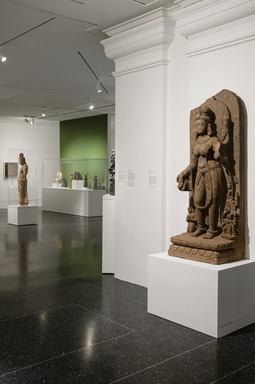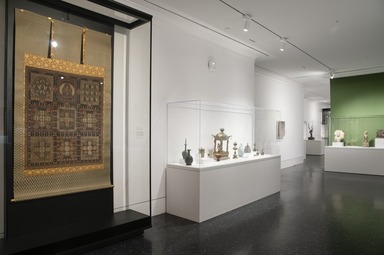

Arts of Buddhism, Friday, January 21, 2022 through ongoing (Image: DIG_E_2022_Arts_of_Buddhism_01_PS20.jpg Brooklyn Museum. (Photo: Danny Perez) photograph, 2022)
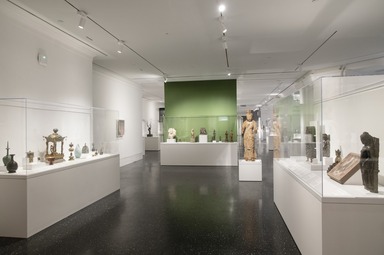
Arts of Buddhism, Friday, January 21, 2022 through ongoing (Image: DIG_E_2022_Arts_of_Buddhism_02_PS20.jpg Brooklyn Museum. (Photo: Danny Perez) photograph, 2022)
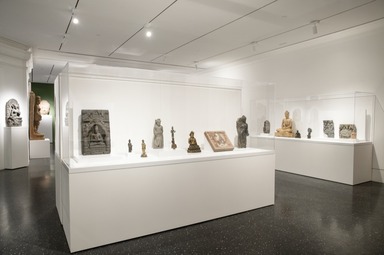
Arts of Buddhism, Friday, January 21, 2022 through ongoing (Image: DIG_E_2022_Arts_of_Buddhism_03_PS20.jpg Brooklyn Museum. (Photo: Danny Perez) photograph, 2022)
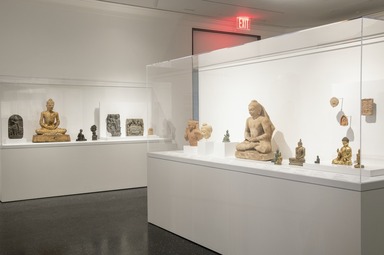
Arts of Buddhism, Friday, January 21, 2022 through ongoing (Image: DIG_E_2022_Arts_of_Buddhism_04_PS20.jpg Brooklyn Museum. (Photo: Danny Perez) photograph, 2022)

Arts of Buddhism, Friday, January 21, 2022 through ongoing (Image: DIG_E_2022_Arts_of_Buddhism_05_PS20.jpg Brooklyn Museum. (Photo: Danny Perez) photograph, 2022)
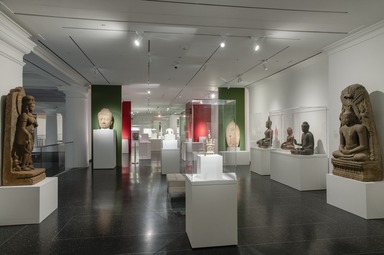
Arts of Buddhism, Friday, January 21, 2022 through ongoing (Image: DIG_E_2022_Arts_of_Buddhism_06_PS20.jpg Brooklyn Museum. (Photo: Danny Perez) photograph, 2022)

Arts of Buddhism, Friday, January 21, 2022 through ongoing (Image: DIG_E_2022_Arts_of_Buddhism_07_PS20.jpg Brooklyn Museum. (Photo: Danny Perez) photograph, 2022)
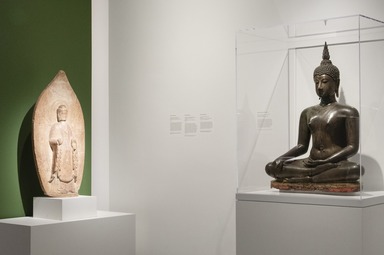
Arts of Buddhism, Friday, January 21, 2022 through ongoing (Image: DIG_E_2022_Arts_of_Buddhism_08_PS20.jpg Brooklyn Museum. (Photo: Danny Perez) photograph, 2022)

Arts of Buddhism, Friday, January 21, 2022 through ongoing (Image: DIG_E_2022_Arts_of_Buddhism_09_PS20.jpg Brooklyn Museum. (Photo: Danny Perez) photograph, 2022)
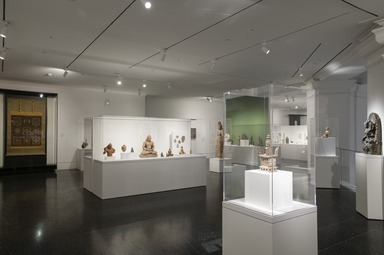
Arts of Buddhism, Friday, January 21, 2022 through ongoing (Image: DIG_E_2022_Arts_of_Buddhism_10_PS20.jpg Brooklyn Museum. (Photo: Danny Perez) photograph, 2022)

Arts of Buddhism, Friday, January 21, 2022 through ongoing (Image: DIG_E_2022_Arts_of_Buddhism_11_PS20.jpg Brooklyn Museum. (Photo: Danny Perez) photograph, 2022)

Arts of Buddhism, Friday, January 21, 2022 through ongoing (Image: DIG_E_2022_Arts_of_Buddhism_12_PS20.jpg Brooklyn Museum. (Photo: Danny Perez) photograph, 2022)

Arts of Buddhism, Friday, January 21, 2022 through ongoing (Image: DIG_E_2022_Arts_of_Buddhism_13_PS20.jpg Brooklyn Museum. (Photo: Danny Perez) photograph, 2022)

Arts of Buddhism, Friday, January 21, 2022 through ongoing (Image: DIG_E_2022_Arts_of_Buddhism_14_PS20.jpg Brooklyn Museum. (Photo: Danny Perez) photograph, 2022)

Arts of Buddhism, Friday, January 21, 2022 through ongoing (Image: DIG_E_2022_Arts_of_Buddhism_15_PS20.jpg Brooklyn Museum. (Photo: Danny Perez) photograph, 2022)

Arts of Buddhism, Friday, January 21, 2022 through ongoing (Image: DIG_E_2022_Arts_of_Buddhism_16_PS20.jpg Brooklyn Museum. (Photo: Danny Perez) photograph, 2022)
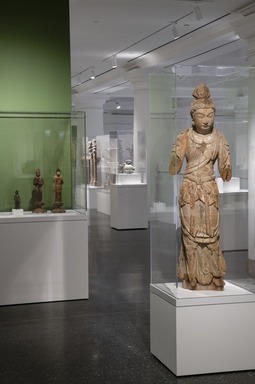
Arts of Buddhism, Friday, January 21, 2022 through ongoing (Image: DIG_E_2022_Arts_of_Buddhism_17_PS20.jpg Brooklyn Museum. (Photo: Danny Perez) photograph, 2022)
Arts of Buddhism
-
Arts of Buddhism
Buddhism is a religion and philosophical system that originated in India about 500 B.C.E. It has since spread to many areas of Asia and beyond. The practice of Buddhism can include meditation, study of sacred texts, and prayer before icons of Buddhist deities. The term buddha means “awakened one”: all Buddhists strive to wake up to the truths that lie hidden beyond the distractions of day-to-day life. Realizing those truths, known as enlightenment, is the key to escaping the pain and suffering that characterize human existence. The many schools of Buddhism offer different methods for reaching that realization. Within those schools, there are Buddhists who dedicate their lives to spiritual pursuits (becoming monks, nuns, and priests) and Buddhists who continue to work and have families but strive to uphold the values of the religion.
Buddhist art consists of temples designed to enhance Buddhist practice, images of Buddhist deities and teachers, and objects used during rituals. Works of art help the worshipper by offering focal points for meditation and prayer and by illustrating Buddhist ideals. The vast majority of Buddhist art was donated to religious institutions by practitioners who hoped to gain spiritual merit from their generosity. Before being employed in rituals, images of Buddhist deities are usually consecrated, a process that empowers the object to act as an embodiment of, or portal to, enlightenment.
The styles and materials of Buddhist art vary regionally. But some elements of iconography—symbols that viewers can use to identify who or what is represented—are seen throughout the Buddhist world. In this gallery, we juxtapose images from multiple areas of Asia, and many different periods, to show the diversity of form and the shared heritage of Buddhist art. -
Iconography: The Vocabulary of Buddhist Art
In some schools of Buddhism there are literally hundreds
of Buddhas, Bodhisattvas, guardians, and other enlightened
beings. Artists and viewers of Buddhist art rely on a shared
vocabulary of visual clues and symbols to distinguish one
Buddhist figure from another and to refer to the teachings
and roles of those figures. In English, we call the established
system of clues and symbols iconography.
In Buddhist iconography, probably the most basic
differentiation is that between Buddhas (the highest form
of enlightened being) and Bodhisattvas (beings who could
be Buddhas but opt to remain more accessible to assist
others on a spiritual path).
Images of Buddhas tend to look like the historical
Buddha, Shakyamuni, with features such as short
hair revealing a bump on top of the head, called
an ushnisha; long earlobes with empty piercings,
representing the rejection of luxuries like heavy
earrings; and a draped monastic costume.
Images of Bodhisattvas tend to look more like
princes, with longer hair and elaborate jewelry.
One of the most important ways to identify a Buddhist
figure is to look at the hands.
Hand gestures, called mudras, can tell us
whether an individual is meditating, teaching,
reassuring, or granting wishes. Mudras are
particularly helpful in identifying episodes in the
life of Shakyamuni: when he touches the ground,
he is about to gain enlightenment.
What the hands hold is also informative. Among
the most common items are a long-stemmed lotus,
a stylized thunderbolt (vajra), a water bottle
(kundika), a book (sutra), and a reliquary or burial
mound (stupa).
When a Buddhist divinity has more than two hands,
it is usually a sign that the figure represents a
more complex philosophical ideal, to be worshipped
by advanced practitioners. -
The Evolving Buddha Image
Buddhism began in India about 500 B.C.E. with the teachings of a prince, known as Siddhartha or Gautama, who found spiritual enlightenment and became the Buddha, or Awakened One. After his enlightenment he was known as Shakyamuni Buddha. The life story of Shakyamuni is told in another area of this gallery.
Throughout Asian art the historical Buddha looks roughly the same: he has a bump on his head and sometimes a spot on his forehead (both traits were said to be present at his birth), elongated earlobes from the earrings he once wore as a prince, and the short hair and draped garments of a monk. He can be depicted standing but more often is shown seated with his legs pulled up in a meditative posture. The most telling aspects of any image of a Buddha are the hand gestures, which can identify the part of Shakyamuni’s life story that is being represented or can distinguish one Buddha from another.
Each culture that adopted Buddhism brought subtle changes to the way it represented the Buddha, including differences in bodily proportions, facial types, ways of depicting hair, and styles of draped garments. The materials that sculptors preferred also influenced the appearance of Buddha images: most cultures favored either stone or bronze, but wood and clay were also popular. -
The Multiple Buddhas of Buddhism
As the Buddhist religion evolved, the historical Buddha came to be understood as only one among many Buddhas. Some Buddhas are said to have arisen as aspects of Shakyamuni, while others are said to have existed eternally. Some are more powerful or abstract—embodying philosophical concepts—while others, like the Medicine Buddha, play more specific roles.
Although the true nature of the Buddhas is formless and beyond human comprehension, they can assume more limited, physical manifestations that are represented in art. Most Buddha images resemble Shakyamuni, sporting the cranial bump (ushnisha) and monastic garments. Their identities can be distinguished by their hand gestures, their color, and the context in which they appear. In some cases, Buddhas, including Shakyamuni, can be depicted wearing crowns and jewelry. Maitreya, the Buddha of the Future, is sometimes represented as a Bodhisattva, with long hair and jewelry, because he is not yet a Buddha. But more often a crown on a Buddha image serves as a reminder of the Buddha’s role as a powerful ruler of the heavens. -
The Goddess Tara
In Vajrayana, or esoteric Buddhism, many philosophical ideals—and the male deities who embody those ideals—are said to have a more active and volatile female aspect, called shakti. This aspect is just as important as the male and must be acknowledged. In Himalayan Buddhism in particular, goddesses are worshipped both as the consorts to Buddhas and Bodhisattvas and as stand-alone deities. The earliest of these Buddhist goddesses to gain popularity was Tara. She is usually described as the female aspect of the Bodhisattva Avalokiteshvara and as such is the embodiment of compassion. From her origins in India, Tara has been worshipped as a protector of travelers and is most often the focus of prayers for long life.
Like many esoteric Buddhist deities, Tara has several forms, usually differentiated by color, each of whom has a distinct role and personality. Of these, Green Tara is the most popular. Voluptuous, at ease, and carrying a lotus bud, Green Tara protects against both earthly dangers (such as wild animals, floods, and bandits) and metaphysical obstacles to enlightenment (such as pride, desire, and delusion). -
Buddhist Ritual Objects
Museum presentations of Buddhist art usually emphasize figural images that were the focus for prayer in temples and home shrines. But a great deal of Buddhist practice is conducted without icons. Dedicated Buddhists usually engage in both meditation—which usually requires nothing more than one’s mind—and rituals of prayer and offerings, which may or may not involve a Buddha image but often require appropriate tools and containers.
Ceremonial objects were made of the most luxurious materials available, in order to show respect for the religious context. Individuals and communities often donated expensive ritual implements to temples as a way of displaying faith and in hopes of gaining spiritual merit in return. Other ritual objects were made for personal use in home shrines or to carry when traveling.
-
December 10, 2021
On January 21, 2022, the Brooklyn Museum will unveil a new gallery dedicated to the Arts of Buddhism collection, the latest in a series of new galleries for its Arts of Asia and the Islamic World collections. The installation, organized by Joan Cummins, Lisa and Bernard Selz Senior Curator, Asian Art, juxtaposes artworks from various regions and periods, with nearly seventy objects from fourteen countries dating from the second century C.E. to the early 2000s.
The Arts of Buddhism gallery serves as an introduction to the tenets and history of the Buddhist religion. Many of the works on display are sculptural depictions of Buddhas and other enlightened figures. Also included are ritual tools and ornaments made for use in Buddhist temples as well as a small selection of paintings. Among the objects newly on view are several of the Museum’s masterpieces, including a rare eighth-century image of the goddess Tara from Odisha, India; a Chinese silver reliquary dedicated by a Buddhist monk and his mother; and a gilt-bronze seated Buddha from southern China. There are also at least nineteen objects that have never before been on display at the Museum. As part of the inaugural installation of the gallery, a pair of important Japanese mandala paintings, dating to the fourteenth century, will be on view for the first time in twenty-five years.
The Arts of Buddhism gallery joins the suite of galleries for Arts of Asia and the Islamic World, located on the Museum’s second floor, which also includes galleries for Arts of Korea, China, Japan, and Southeast Asia. Later in 2022, the Museum will unveil galleries for Arts of the Himalayas, Arts of the Islamic World, and Arts of South Asia. These galleries are part of a multi-year project to modernize the Museum’s second floor, which features state-of-the-art casework and lighting and which reflects extensive curatorial research and conservation.
Arts of Buddhism
View Original
